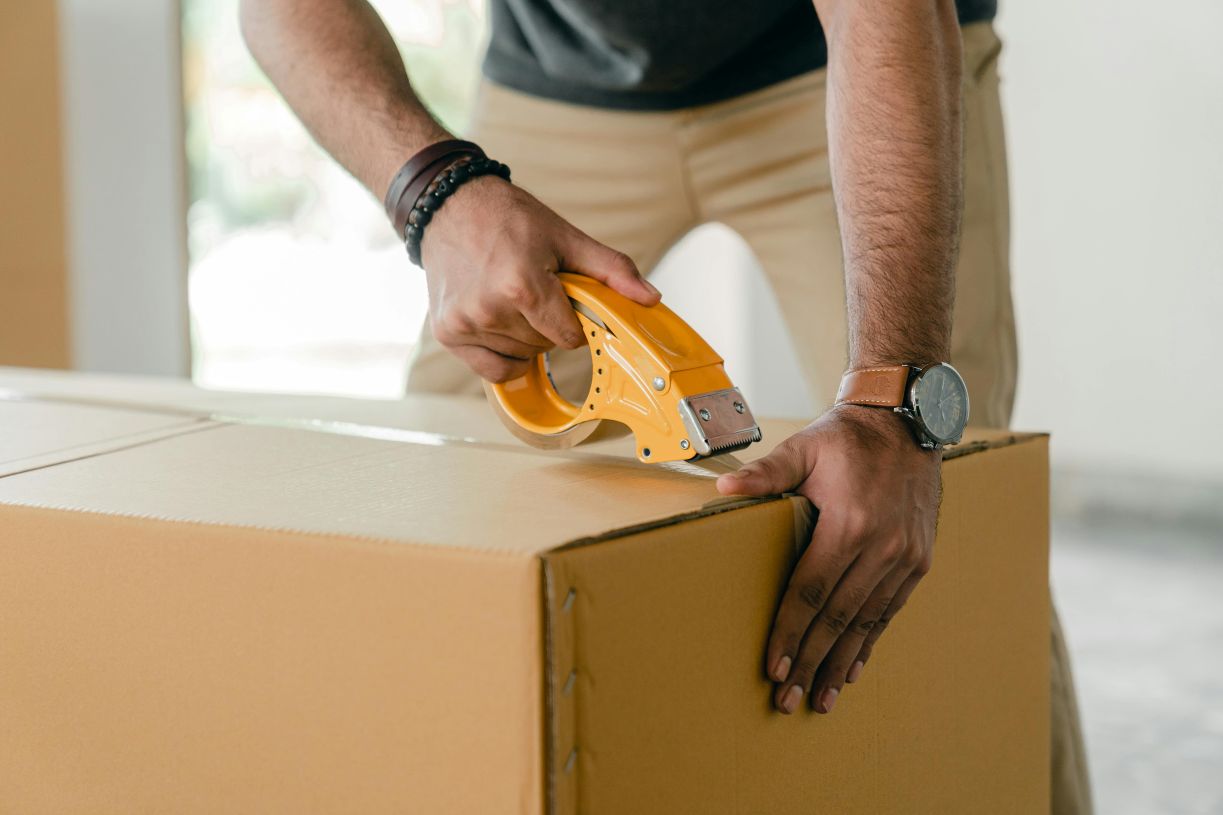
TOP 5 most common packaging mistakes companies make (and how to fix them)
Packing a product often seems simple – put it in a box, stick on an address label, and ship it. But is it really that simple? In reality, effective packaging is much more than a cardboard box and tape. It’s a carefully designed process that determines whether the product will reach the customer safely, cost-effectively, and with minimal impact on the environment.
As Packnode data shows, 62% of European online shoppers have received damaged goods due to packaging, highlighting how important it is for companies to choose well-thought-out packaging solutions. In this article, we’ll cover the 5 most common packaging mistakes businesses make and share tips on how to avoid them.
#1 Using inappropriate packaging
One of the most common mistakes is using too much material. Oversized boxes or excessive protective packaging not only increase costs but also leave a negative impression on customers, who increasingly value eco-friendly practices.
For example, according to Woola, in 2022 e-commerce packaging waste increased by 14.6%, and protective packaging accounted for 35% of all plastic packaging. Much of this was unnecessary or misused.
Consequences:
◼️ Higher transportation costs (the bigger the packaging, the more space it takes up in trucks or warehouses).
◼️ Negative brand image in terms of sustainability.
How to fix it:
◼️ Analyze product size and weight to choose a precisely fitted box.
◼️ Use fillers that occupy necessary space without adding weight. For example, PAKFUL air cushions consist of 99% air.
◼️ Introduce optimization tools and collaborate with trusted packaging experts to reduce material use.
#2 Insufficient product protection
Sometimes the opposite problem occurs – too little protection. Products that move freely in the box are much more likely to be damaged. This issue is especially relevant for fragile or heavy items.
And it’s not just about transportation losses – it also impacts customer loyalty. According to Contimod, 57% of consumers would hesitate to repurchase from a retailer if they received a damaged product.
Consequences:
◼️ Damaged shipments and customer complaints.
◼️ Higher costs due to replacements or reshipping.
◼️ Risk to brand reputation and future sales volumes.
How to fix it:
◼️ Choose cushioning materials such as air cushions that protect against shocks and vibrations.
◼️ Consider the type of transport – road, air, or sea all carry different risks.
◼️ Test various packaging solutions to find the optimal one.
#3 Using low-quality materials
Many companies tend to choose the cheapest packaging materials. As a result, products arrive to customers damaged or the packaging collapses during transport.
Consequences:
◼️ Customer dissatisfaction and complaints.
◼️ Increased return and replacement costs.
How to fix it:
◼️ Don’t choose materials based on price alone – evaluate their quality and durability.
◼️ Work with trusted suppliers who offer certified, high-quality solutions.
#4 Incorrect packaging sizes
If the box is too large, costs increase. If it’s too small, the product is not properly protected. This mistake often arises when companies use the same box size for different products.
Consequences:
◼️ Extra shipping costs.
◼️ Increased risk of damage.
How to fix it:
◼️ Choose packaging tailored to each product’s size.
◼️ Fill empty space with special materials that both secure the product and avoid adding weight.
◼️ Conduct regular packaging audits to optimize costs and safety.
#5 Avoiding eco-friendly packaging
It’s no secret that businesses are increasingly evaluated based on their sustainability practices. Excessive use of plastic or non-renewable resources can harm brand reputation. According to Meteor Space, 75% of consumers are now willing to pay more for sustainable packaging, showing how important it is for companies to adopt eco-friendly solutions.
Consequences:
◼️ Criticism from consumers and partners.
◼️ Lost opportunities for long-term cost savings.
How to fix it:
◼️ Choose recyclable and reusable materials.
◼️ Implement systems where packaging can be recycled or returned for reuse.
◼️ Partner with suppliers who provide eco-friendly packaging solutions and help optimize your business processes.
How do PAKFUL solutions help businesses grow?
Companies are increasingly looking for ways not only to protect their products but also to optimize daily operations. Our approach is based on the philosophy that packaging is not just an expense but a strategic advantage for the company.
◼️ Lower costs, more efficiency: Our packaging solutions help reduce transportation and warehouse costs by up to 25%.
◼️ Faster, easier packing: Automated systems like air filling machines speed up the packing process, allowing employees to work more efficiently and deliver faster.
◼️ Tailored solutions for every business: We know each business is unique. That’s why we provide not only materials but also expertise and knowledge to improve packaging safety, efficiency, and sustainability.
◼️ Trusted partner: Our approach is built on successful collaboration.
Packaging as a strategic business value
Product packaging is not just a box or material covering the product – it’s a strategic tool that affects costs, reputation, and customer satisfaction. The right packaging solutions reduce damage risks, optimize logistics, and strengthen brand image.
If you want to implement modern and efficient packaging solutions in your company, get in touch with us. We’ll share our expertise and help you find solutions best suited for your business.
Email: veikals@pakful.lv
Phone: +371 26660018
